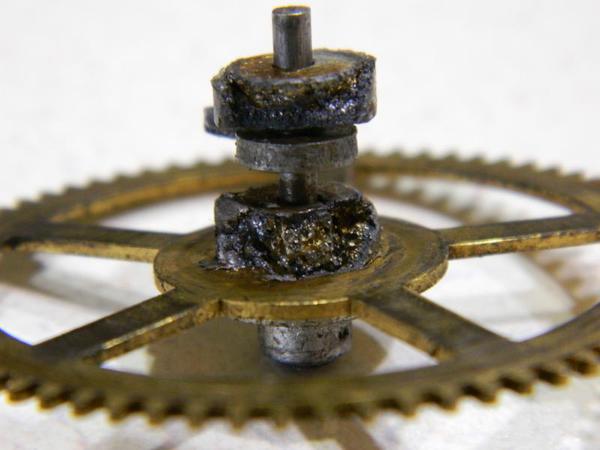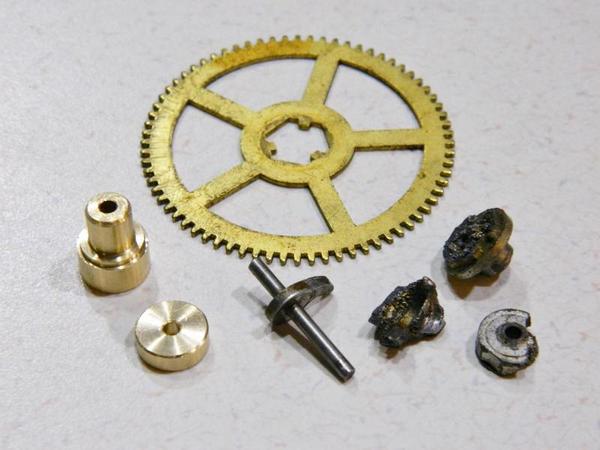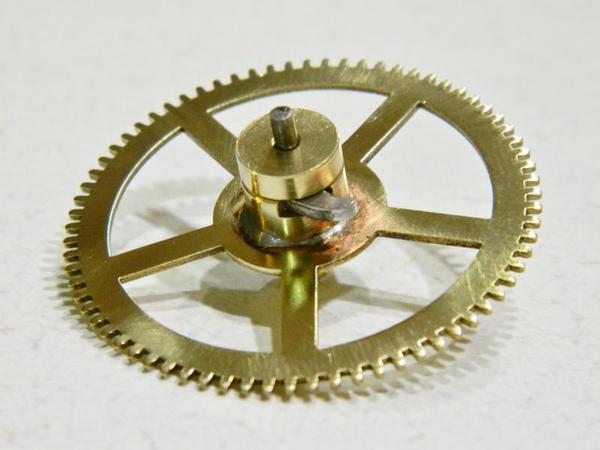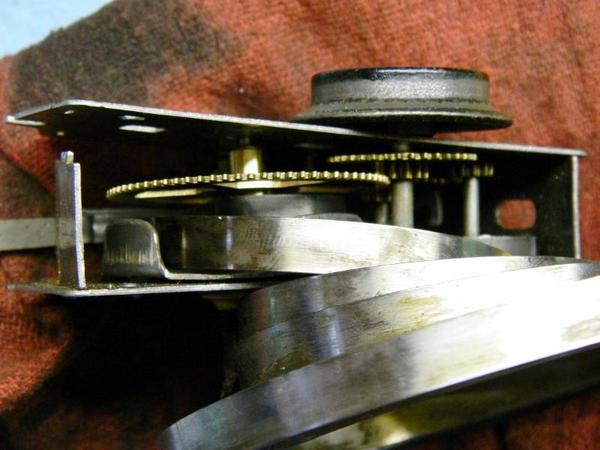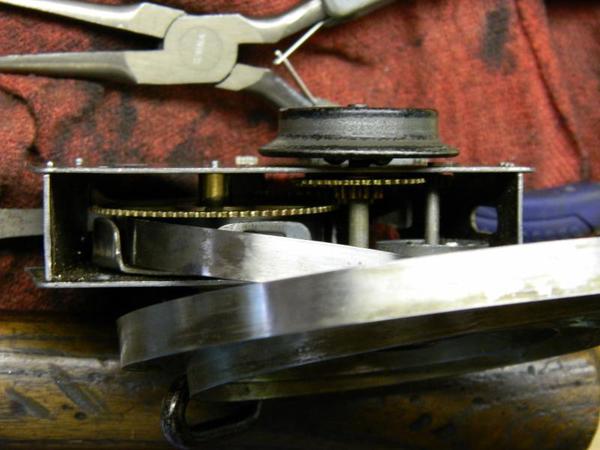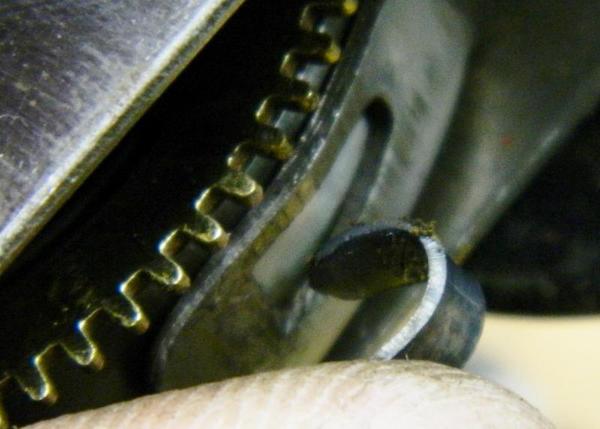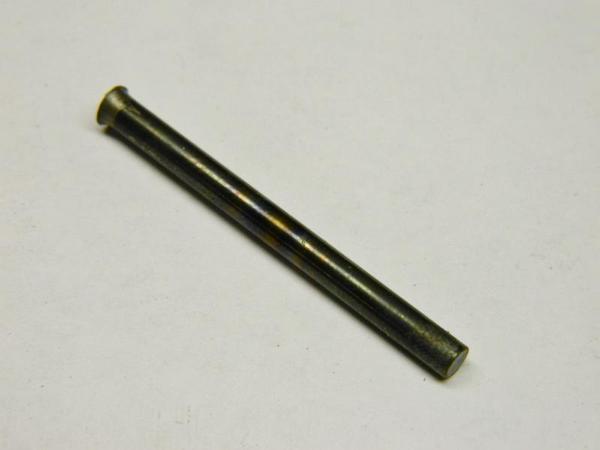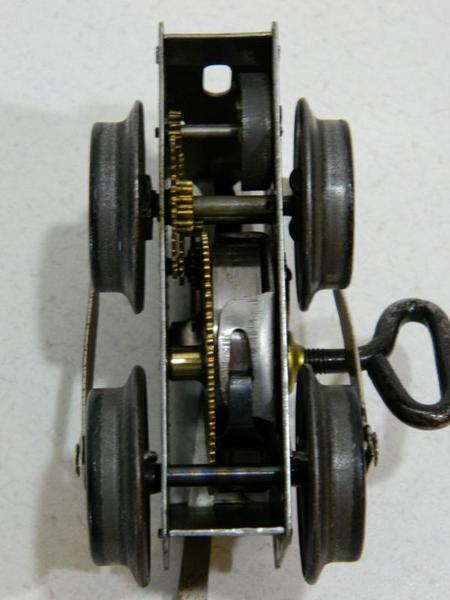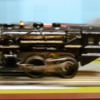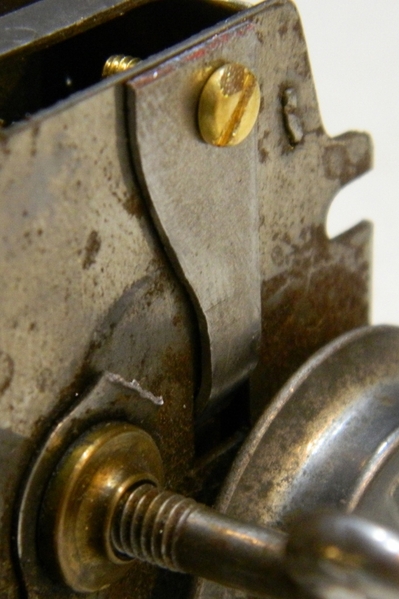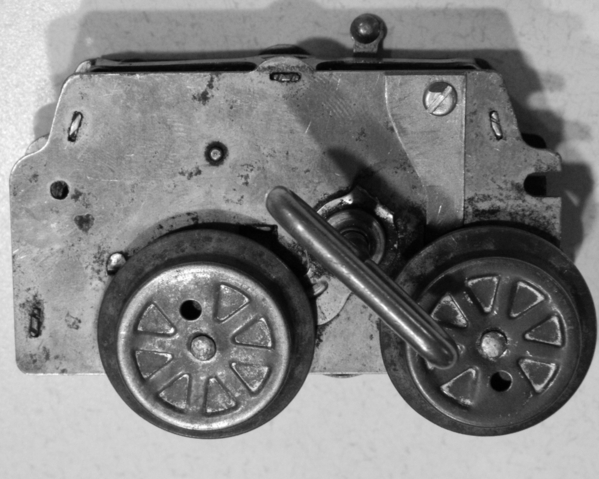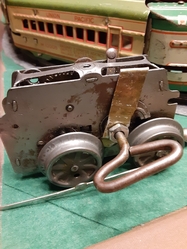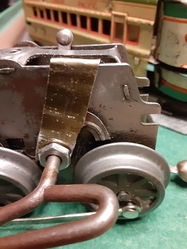Even though Hafner windup motors are very reliable, they can still develop problems. One issue that I've seen quite a few times is the die-cast mainspring hub disintegrating due to zinc pest. I thought some of you might be interested in a few pictures of the repair process...
The problem: You can see how the die-cast mainspring hub has disintegrated and split, allowing the catch to spin free instead of transferring the motion to the big gear.
New parts: The old hub is carefully removed from the big gear, taking care not to damage the gear. The new hub parts are machined out of yellow brass, and can be seen to the left. The original gear, catch & shaft will be reused. The old mainspring hub parts are on the right.
The new hub parts are assembled with the original big gear, catch & shaft using a good silver-bearing solder.
The original mainspring is attached to the hub/gear assembly, then installed in the partially disassembled motor. Note that it is necessary to remove the back axle and wheels to do this - the axle has to be cut apart for disassembly.
Once the hub assembly and intermediate shafts are lined up, the motor sideplate is pressed over the tabs and reswaged. Now the rest of the mainspring is wound into place by turning the drive wheels backward. Since Hafner motors are "basket winders" this is the easiest way to install the mainspring.
In order to remove the mainspring, the outer end had to be cut off. Otherwise the motor would have to come completely apart, and the repair would require a lot more work. The outer end of the spring has to be reterminated. It is ground down so it is narrow enough to fit in the slot of the winding basket. A propane torch is used to heat the end of the spring cherry red, and the end bent into a hook. It is carefully guided into the slot in the basket as the spring is wound into place.
Even though the motor is running at this point, it is still missing its rear wheels. A new axle is cut out of 0.140" round steel, and the ends are ground square. The axle ends are heated to cherry red and allowed to cool slowly to make them more malleable. The wheels are held in place by swaging (mushrooming) the ends of the axle, which is why the old axle had to be destroyed to remove it. I like to swage one end of the axle with it held firmly in a vice, then c-a-r-e-f-u-l-l-y swage the other end with the wheels, spacers and axles in place on the motor. This is a delicate part of the project, and one has to take care so that the hammer doesn't slip and damage the wheel or siderods.
The completely reassembled motor, ready to install in the body.
Success at last... the Hafner making a successful test run around the layout!
Even though these motors were built as toys and never intended to be disassembled or repaired, they can be fixed. I hope that this post will help take some of the mystery out of clockwork motor repair...




